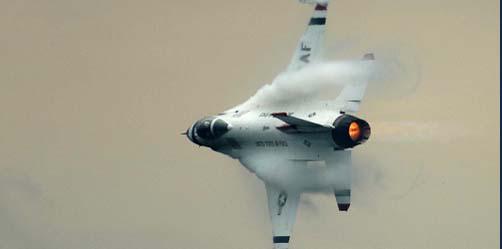Air Force to Tackle Air, Space and Cyberspace Needs at TechNet Air
As the air superiority gap narrows between the U.S. military and its pursuing adversaries, airpower and information dominance will command center stage for discussions at this month’s TechNet Air 2016 symposium in Texas.
As the air superiority gap narrows between the U.S. military and its pursuing adversaries, airpower and information dominance will command center stage for discussions at this month’s TechNet Air 2016 symposium in Texas.
Air operations not only require accurate information and effective communications, coordination and security, but they must also be better than challengers campaigning to usurp the lead once commanded by the United States.
TechNet Air 2016, hosted by AFCEA International, will address issues of national defense, command and control and information dominance, and provide a forum to examine the issues impacting the Air Force—from cyber to intelligence and electronic warfare missions. “[W]e are fully engaged in every region of the world, in every mission area, across the full spectrum of military operations,” Air Force Secretary Deborah Lee James testified before the Senate Appropriations Committee on the fiscal year 2017 Air Force posture in February. “Put simply: we have never been busier on such a sustained and such a global basis.”
James will deliver TechNet Air 2016’s inaugural keynote when the three-day symposium kicks off March 22 at the Henry B. Gonzalez Convention Center in San Antonio.
James has outlined three Air Force priorities: addressing needs of its work force, balancing readiness and modernization, and getting the most out of the service’s allocated dollars. The service seeks $166.9 billion overall in FY2017.
A key part of regaining dominance, officials say, is investment in research areas such as autonomous learning systems, human-machine collaboration and teaming, truly autonomous platforms and network-enabled semi-autonomous technologies—innovations that comprise the Air Force’s offset strategy, part of the Defense Department’s modernization strategy called the Defense Innovation Initiative, introduced in November 2014.
“We take [the commitment to innovation] very, very seriously,” James says in a statement. “And there is no doubt in my mind that, by pairing future air, space and cyberspace technologies together with innovative concepts, America’s airmen will be the ones leading the joint force in ensuring our nation’s advantage against any adversary into the future.”
The initiative is the department’s third offset strategy in recent history, and used to direct funding for research and development efforts to prevail over potential opponents. The first two were nuclear deterrence and precision airpower.
Other symposium presenters include Lt. Gen. James Holmes, USAF, deputy chief of staff for strategic plans and requirements, and Maj. Gen. Scott Vander Hamm, USAF, assistant deputy chief of staff for operations.
As cyber will be a topic to dominate symposium talks, one panel is dedicated to providing updates to the service’s Task Force Cyber Secure. The Air Force last year stood up the task force to overcome cyber challenges through three key initiatives.
Other issues prominent in the Air Force’s radar include the next long-range bomber and efforts to increase the number of active duty personnel. After a reduction in force two years ago that dropped manpower to about 311,000, the Air Force seeks to build its end strength by about 6,000 airmen. “[M]ission demands will indicate that we need even more growth in FY17,” James said at the Air Force Association’s Air Warfare Symposium.





Comments